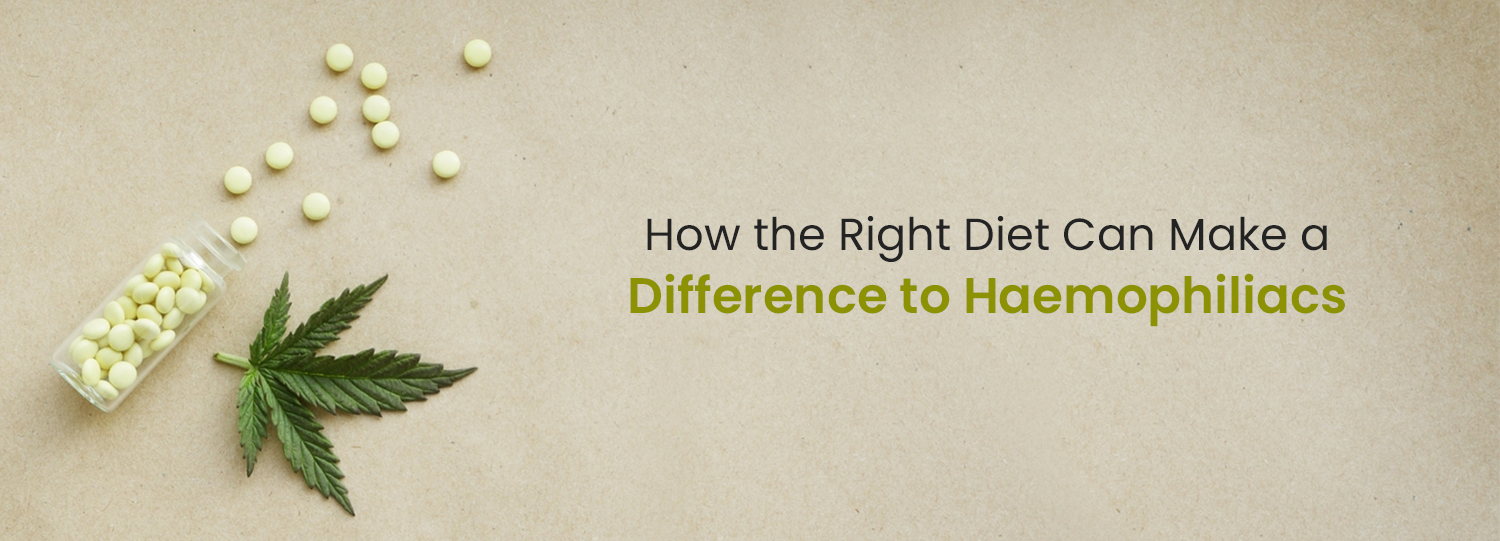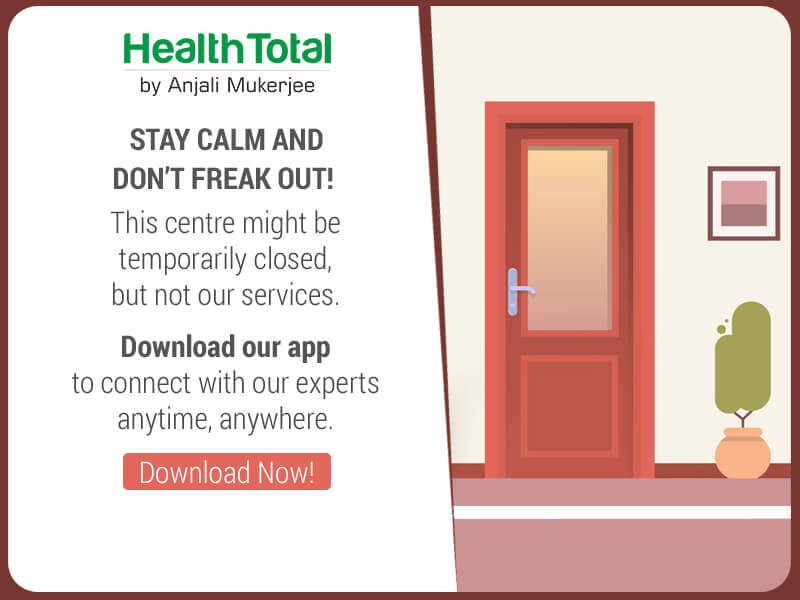
How the Right Diet Can Make a Difference to Haemophiliacs
Does any of your near and dear ones suffer from haemophilia? Are you wondering how you can help ease their discomfort and minimize blood loss? If you nodded along in agreement and concern, you may find this article helpful. Haemophilia is an inherited bleeding disorder where your blood fails to clot properly and you may experience marked blood loss. Haemophiliacs may experience unexplained, excessive bleeding after injuries, vaccination, or surgery, nosebleeds without a known cause, and blood in the stools and urine. This largely impacts the health-related quality of life of the haemophiliacs. For this purpose, World Haemophilia Day is celebrated on the 17th of April every year. The global day aims to raise awareness about haemophilia and other bleeding disorders. Also, it honours the birth anniversary of the renowned personality Frank Schnabel. He is well-known globally for being the founder of the World Federation of Haemophilia. This year – 2023, the theme of this global health awareness day is “Access for All: Prevention of bleeds as the global standard of care”. It calls on the community to join hands and work with government and local bodies to improve access to care and treatment for better management and prevention of bleeds for PWBDs – people with bleeding disorders. It emphasizes home-based treatment and prophylactic treatment for haemophiliacs to lead a better quality of life. Making the right dietary choices and following a diet chart for obesity prevention can help improve the quality of life of haemophiliacs.
Haemophiliacs have a risk of suffering from uncontrollable bleeding that can pose a threat to their life. So, they are discouraged from involving in outdoor sports and activities from a young age. So, haemophiliacs are more likely to suffer from obesity. Teenagers and kids suffering from this bleeding disorder are almost twice prone to gain excessive weight and turn overweight. This can put extra strain on their joints and muscles and lead to bleeds. So, haemophiliacs need to maintain a healthy body weight. Moreover, eating healthy is also essential for haemophiliacs. A well-designed weight loss diet plan and homeopathy for stress relief can help haemophiliacs in soothing their discomforts and preventing or lowering the potential bleeding risks. Iron, copper, vitamin B6, vitamin B12, protein, vitamin C, folic acid, and copper are involved in the production of red blood cells. So, you need to follow an obesity diet plan comprising foods rich in essential nutrients. Check out dietary tips that can help you have the right diet to beat haemophilia effectively.
6 Best Dietary Tips for Haemophiliacs
Include Iron & Vitamin C Food Sources in Your Diet
Maintaining good iron levels is crucial for haemophiliacs, as, when they suffer from excessive bleeding, a marked amount of iron is lost. About 0.75 micrograms of iron are lost with each 15 ml of blood. So, enrich your weight loss diet plan with foods abundant in iron, such as leafy green vegetables, dried beans, apples, spinach, raisins, liver, broccoli, poultry, and grains. Combining foods rich in iron and foods rich in vitamin C can help improve the absorption of iron in your body. So, along with foods rich in iron, add citrus fruits, such as oranges, sweet lime, lemon, broccoli, and tomatoes to your diet. Refrain from eating processed and refined foods.
Add Whole Grains to Your Diet
Whole grains have all their nutrient-dense parts intact. So, eating them helps haemophiliacs receive a healthy dose of fibre, vitamins, and minerals that are essential for their good health. Whole grains help lower your cholesterol levels, satiate your appetite, supply you with several nutrients, and stabilize your blood glucose levels. So, include whole wheat, oats, brown rice, barley, and bran in your daily diet chart for obesity.
Reduce the Intake of Fats & Choose Healthy Oils
To beat obesity when suffering from haemophilia, reduce your intake of fats. Prefer to use healthy oils for cooking that include canola oil and olive oil. Use these oils in place of butter and animal fats. Choose to eat foods with healthy fats, such as walnuts and fish. You can switch to low-fat dairy products, such as low-fat cheese and skimmed milk, as they supply you with a healthy dose of vitamins, minerals, and calcium with no unrequired fats. Make sure that you avoid eating saturated fats that are present in high-fat meat and full-fat dairy.
Also, avoid eating foods containing excessive carbohydrates and trans fats, such as cookies, sweets, pastries, juices with artificial sweeteners, candies, chocolates, and pizza. You can minimize the consumption of fat by preferring to eat boiled, baked, and grilled foods instead of fried foods. Also, ensure that you eat the right quantity of food to maintain a healthy weight.
Build on Calcium
Calcium is a crucial nutrient for having strong and healthy bones and teeth. Haemophiliacs need to have healthy teeth to prevent the risk of gum disease which can cause bleeds. So, include foods packed with calcium in your diet chart for obesity, such as yoghurt, milk, cottage cheese, and calcium-fortified cereals. Also, maintain good dental hygiene.
Stay Hydrated
Keeping your body hydrated is very important when suffering from haemophilia. Water is crucial for good health and the functioning of all your body organs and joints. So, boost your water intake by drinking ample plain water daily. You may also drink homemade soups, coconut water, and lemon water when on an obesity diet plan.
Keep Hidden Sugars and Fatteners Off
Several people are not aware of the quantity of sugar present in soft drinks. Healthy fruit juices may also be high in sugar and calories. Also, certain salad dressings can be risky. So, keep an eye out for hidden sugars and fatteners in the foods you eat. Prefer to eat mustard instead of ketchup or mayonnaise. Also, avoid food items containing empty calories, such as junk foods. Read the labels on the food items to check for the sugar and fat content in them.
When following these dietary measures, it is wise to have a word with your doctors and certified dietician to help you choose the right foods and avoid those which can increase bleeding risks. If you are on dietary supplements, consult certified dieticians and doctors to avoid those which can increase the risk of bleeding.
Now that you know which foods to eat and which to avoid to prevent the risk of uncontrollable or excessive bleeding in haemophiliacs, make sure that you follow them. Let’s spread the word about the right diet this World Haemophilia Day to help maximum haemophiliacs prevent bleeding risks and improve their health and quality of life. The guidance of certified dieticians and Ayurvedic and homeopathic experts, such as health experts at Health Total, can help you receive a customized diet chart for obesity and homeopath for stress relief along with Ayurvedic solutions. Our integrated treatment plan will not only help you maintain a healthy weight and lower the risk of bleeding, but also eliminate nutritional deficiencies, strengthen your immune system, and boost your immunity. So, waste no time, reach out to us at Health Total and enjoy improved health and quality of life with our personalized weight loss diet plan for haemophiliacs.
Sign up for a FREE consultation with Health Total experts to get more tips for improving your health and achieving weight loss healthily with diet or managing any other health condition. Call toll-free at 1-800-833-171709 and Book Free Consultation!
